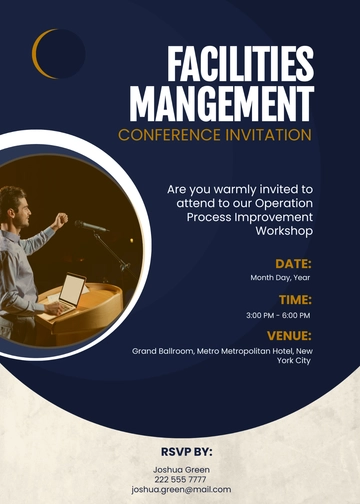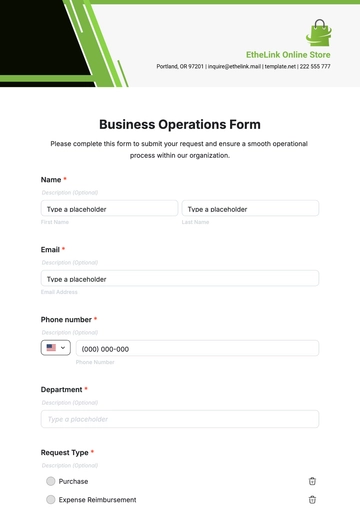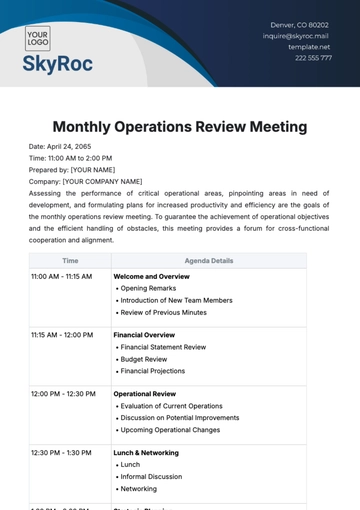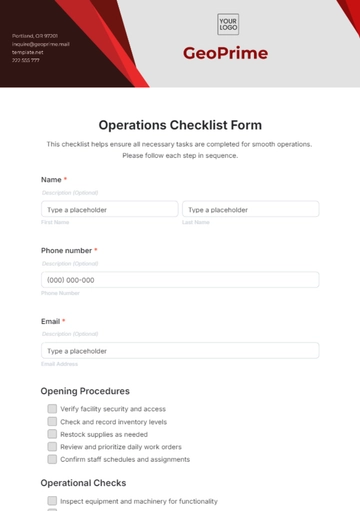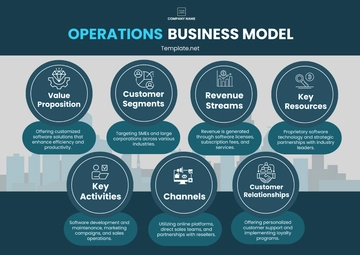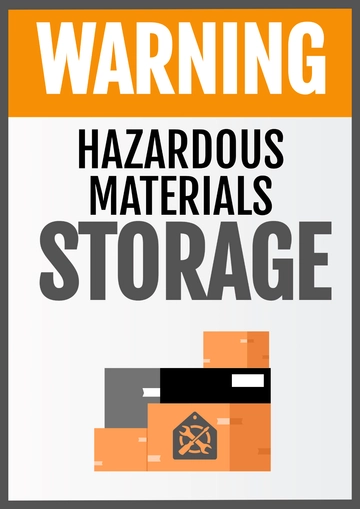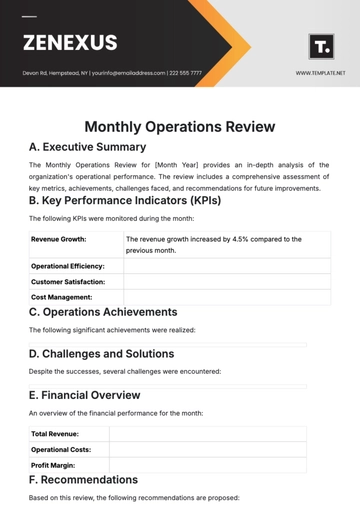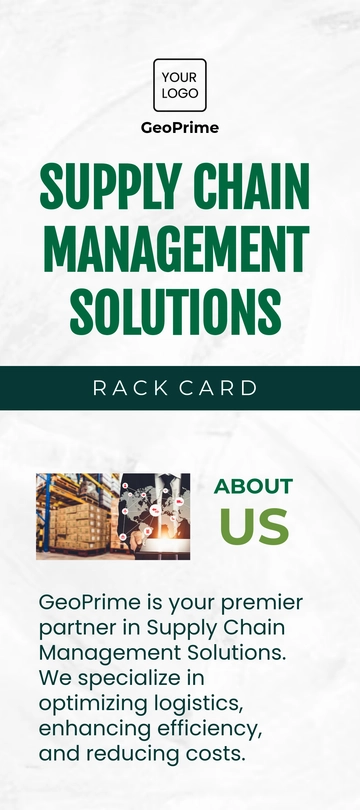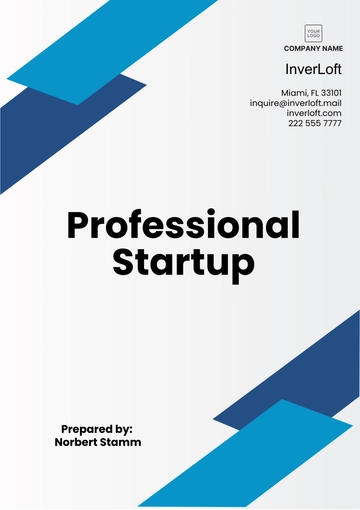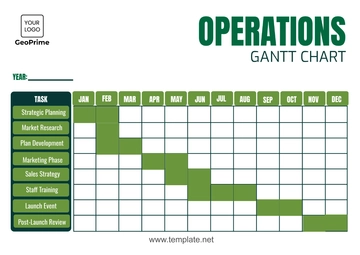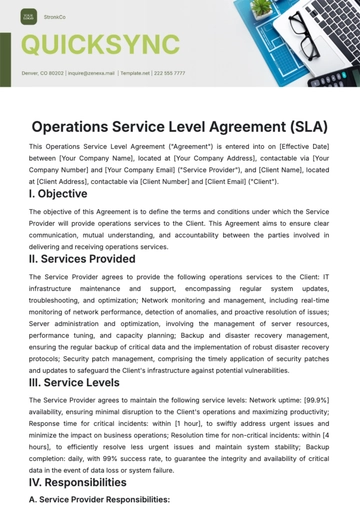Free Operations Project Feasibility Study
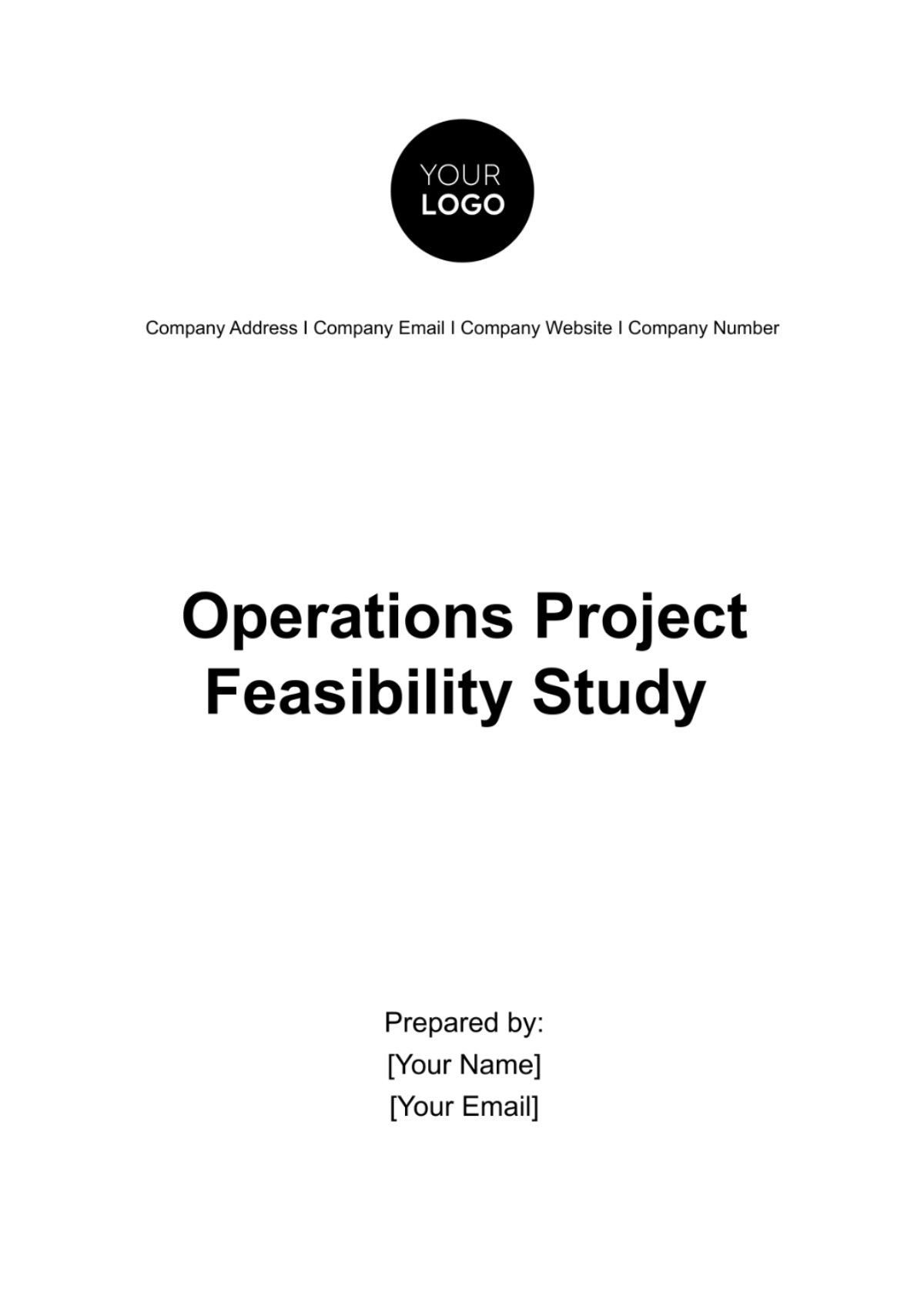
1. Executive Summary
The purpose of this feasibility study is to evaluate the viability of the proposed operations project by [Your Company Name]. This project aims to expand our product line to include [New Product], addressing a gap in the current market and leveraging emerging trends in [Industry Sector]. The study covers market analysis, technical and operational feasibility, financial projections, legal and environmental considerations, and a comprehensive risk assessment.
Key findings indicate a strong market demand for [New Product], with a competitive analysis revealing a favorable position for [Your Company Name] to capitalize on its existing brand reputation and distribution networks. Technical feasibility suggests the need for moderate investments in new technology and training, with operational adjustments identified to streamline production processes. Financial projections show a promising return on investment (ROI) with a break-even point within [X years/months].
Based on these findings, it is recommended that [Your Company Name] proceed with the project, subject to a detailed risk mitigation strategy and further analysis in the subsequent phases of development.
2. Project Background
2.1 Description of the Project
The proposed project entails the development and launch of [New Product], designed to meet the evolving needs of our target market within [Industry Sector]. This initiative is expected to not only diversify our product offerings but also strengthen our market position by responding to the increasing demand for [specific product features or benefits].
2.3 Objectives and Scope
The primary objectives of the project include:
To design, manufacture, and launch [New Product] by [target completion date].
To achieve a market share of [X%] within the first year of launch.
To attain a gross margin of [Y%] on the product line.
The scope of this feasibility study encompasses market analysis, technical requirements, operational workflow, financial viability, legal and environmental considerations, and an in-depth risk analysis.
3. Market Analysis
The market analysis has identified a significant opportunity for [New Product] within the [Industry Sector]. Our research indicates a growing demand among [target demographic, e.g., millennials] for products that offer [specific benefits, e.g., sustainability, ease of use]. With a projected annual growth rate of [X%] in this segment, entering the market now positions [Your Company Name] to capture early market share and establish brand loyalty.
3.1 Target Market and Demographics
Our primary target market consists of [detailed description of the target demographic, including age, location, income level, and interests]. This group is particularly interested in [product feature/benefit], which is a key differentiator for [New Product].
3.2 Market Needs and Trends
Recent trends show a shift towards [trend, e.g., eco-friendly products], with consumers willing to pay a premium for products that meet these criteria. [New Product]'s design incorporates these elements, addressing market needs by [solution offered by the product].
3.3 Competitive Analysis
Our analysis reveals that while there are several established players in the market, such as [Competitor A] and [Competitor B], their offerings lack [specific feature/benefit of New Product]. Our competitive edge lies in [unique selling proposition], which is not currently offered by any major competitor. This gives [Your Company Name] a significant advantage and the opportunity to fill this gap in the market.
4. Technical Feasibility
The development of [New Product] involves integrating [new technology or process] into our existing production capabilities. Initial assessments indicate that while our current infrastructure can support the majority of the new production requirements, upgrades and investments in [specific equipment or technology] are necessary.
4.1 Description of the Technical Requirements
To manufacture [New Product], we will need to acquire [list of new equipment or software], which will allow us to [describe the manufacturing process or technology use]. This will ensure high-quality production and meet the anticipated market demand.
4.2 Assessment of Technical Challenges and Risks
Key challenges include [describe significant technical challenges, such as scaling production or integrating new technology]. To mitigate these risks, we plan to [solution, e.g., partner with technology providers, hire experts]. Additionally, a pilot production run will be conducted to identify potential issues early in the process.
5. Operational Feasibility
Ensuring the operational feasibility of producing [New Product] requires a thorough analysis of our current operations and the identification of areas where changes or improvements are needed.
5.1 Analysis of the Operational Workflow
The introduction of [New Product] will necessitate adjustments in our operational workflow, particularly in [areas requiring change, e.g., supply chain management, inventory control]. To accommodate these changes, we will [specific actions to be taken, e.g., implement a new inventory management system, streamline logistics].
5.2 Required Personnel and Expertise
The production and support of [New Product] will require [number] additional staff, including roles such as [list roles, e.g., production technicians, quality control specialists]. To fill these roles, we will initiate a recruitment drive focusing on candidates with experience in [required areas of expertise]. Existing staff will undergo training in [areas of training], ensuring that our team is fully prepared to deliver [New Product] to our high standards.
6. Financial Feasibility
6.1 Cost Estimates
Expense Category | Estimated Cost |
|---|---|
Capital Expenditure | $[Amount] |
Operating Expenses | $[Amount] |
Total | Total $[Amount] |
6.2 Revenue Forecasts
Year | Forecasted Revenue |
|---|---|
1 | $[Amount] |
2 | $[Amount] |
3 | $[Amount] |
6.3 Break-even Analysis
The break-even point is projected to be reached within [X months/years], with an initial investment recovery by [Date].
6..4 Return on Investment (ROI) and Payback Period
The project's ROI is calculated at [X%] over [Y years], with a payback period of [Z months/years].
7. Legal and Environmental Feasibility
7.1 Legal Requirements and Implications
The launch of [New Product] will be subject to a range of legal considerations, including:
Product Compliance: Ensuring [New Product] meets all applicable national and international standards for [Industry Sector], including [specific regulations or standards related to product safety, environmental impact, etc.].
Intellectual Property Protection: Securing patents and trademarks to protect the innovative features of [New Product] and safeguard against infringement by competitors.
Contractual Agreements: Reviewing and establishing necessary agreements with suppliers, distributors, and partners to support the production and distribution of [New Product].
Legal counsel will be engaged to navigate these requirements, with an estimated legal budget of $[specified amount] allocated to cover consultations, registrations, and any necessary litigation reserves.
7.2 Environmental Impact Assessment
An environmental impact assessment has been conducted, revealing the following key considerations for the [New Product] project:
Sustainable Material Sourcing: Identifying suppliers that provide environmentally friendly and sustainably sourced materials, aligning with [Your Company Name]'s commitment to sustainability.
Energy Efficiency: Implementing production processes that minimize energy consumption, including investing in energy-efficient machinery and optimizing the production workflow to reduce waste.
Waste Management: Developing a comprehensive waste management plan to handle production by-products, including recycling initiatives and partnerships with waste management companies to ensure responsible disposal.
7.3 Sustainability Considerations
[Your Company Name] is committed to not only meeting current environmental standards but exceeding them. Initiatives include incorporating biodegradable packaging for [New Product] and implementing a take-back program for end-of-life product recycling. These efforts are projected to increase production costs by [X%] but are expected to significantly enhance the brand's image and appeal to environmentally conscious consumers.
8. Risk Analysis
A systematic risk analysis has been conducted to identify potential risks associated with the [New Product] project, their likelihood, impact, and proposed mitigation strategies:
Risk Factor | Likelihood | Impact | Mitigation Strategy |
|---|---|---|---|
Supply Chain Disruptions | Medium | High | Establish multiple supplier relationships; maintain inventory buffers. |
Technological Obsolescence | Low | High | Invest in R&D; regularly review and adapt to emerging technologies. |
Regulatory Changes | Medium | Medium | Engage in ongoing regulatory monitoring; adapt operations as necessary. |
Market Acceptance | High | High | Conduct market testing; adapt marketing strategies based on feedback. |
Environmental Regulation Compliance | Low | High | Early engagement with environmental agencies; ensure design complies with regulations. |
9. Conclusion and Recommendations
Based on the comprehensive analysis conducted as part of this feasibility study, [New Product] presents a viable and promising opportunity for [Your Company Name]. Market analysis indicates a strong demand for the product, while technical and operational feasibility assessments suggest that the project is well within the company's capabilities, albeit with some necessary investments and adjustments.
The financial projections, bolstered by robust revenue forecasts and a favorable ROI, further support the project's viability. Legal and environmental considerations have been addressed, with plans in place to ensure compliance and promote sustainability.
However, the identified risks necessitate a cautious and well-planned approach. It is recommended that [Your Company Name]:
Proceed with the development of [New Product], ensuring alignment with the outlined strategic objectives and market needs.
Implement the proposed risk mitigation strategies, with particular focus on supply chain diversification, technological innovation, and market testing.
Allocate resources to ensure legal compliance and environmental sustainability, recognizing these as key factors in the project's long-term success.
Further steps include finalizing the project plan, securing necessary approvals and funding, and initiating the detailed design and development phase.
- 100% Customizable, free editor
- Access 1 Million+ Templates, photo’s & graphics
- Download or share as a template
- Click and replace photos, graphics, text, backgrounds
- Resize, crop, AI write & more
- Access advanced editor
Optimize project outcomes with the Operations Project Feasibility Study Template from Template.net. Designed to assess viability, this template is fully customizable and editable via an Ai Editor Tool, enabling a tailored analysis of your project's potential. Elevate decision-making with comprehensive insights, ensuring your operations are aligned for success right from the start.
